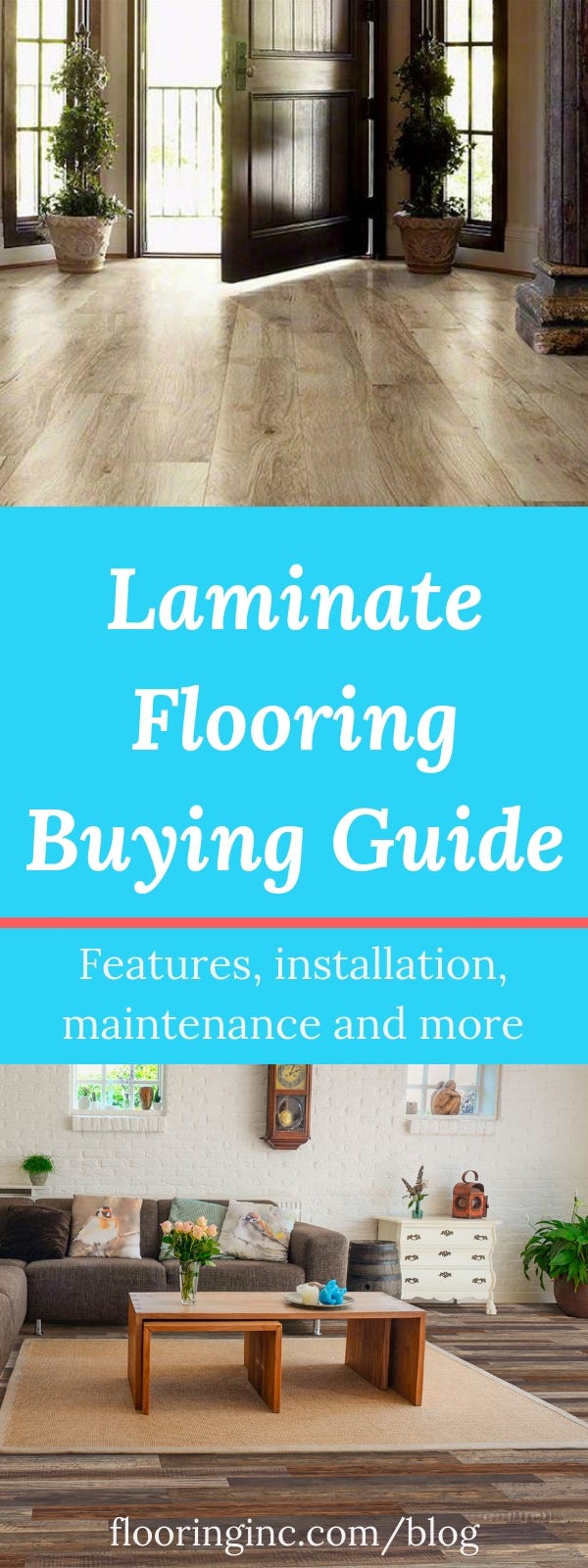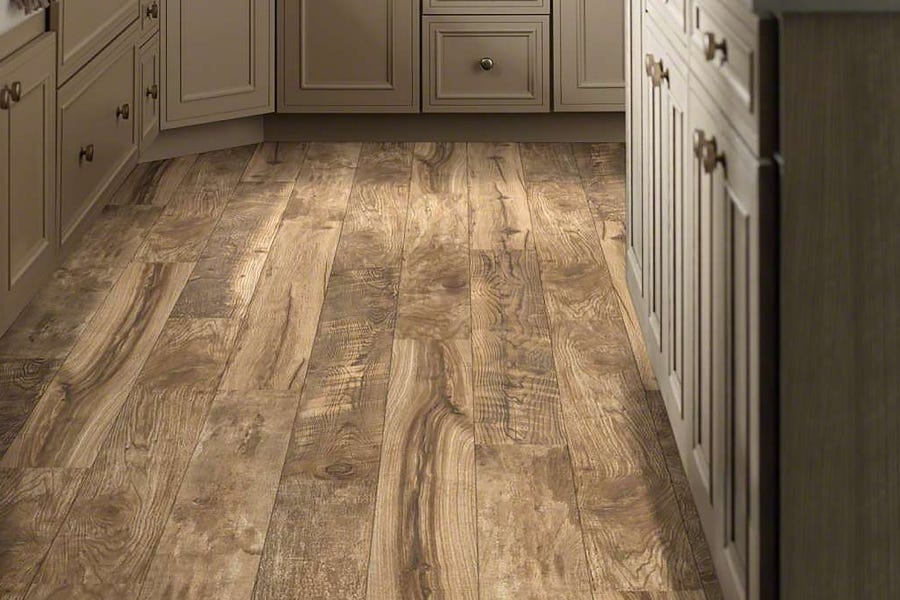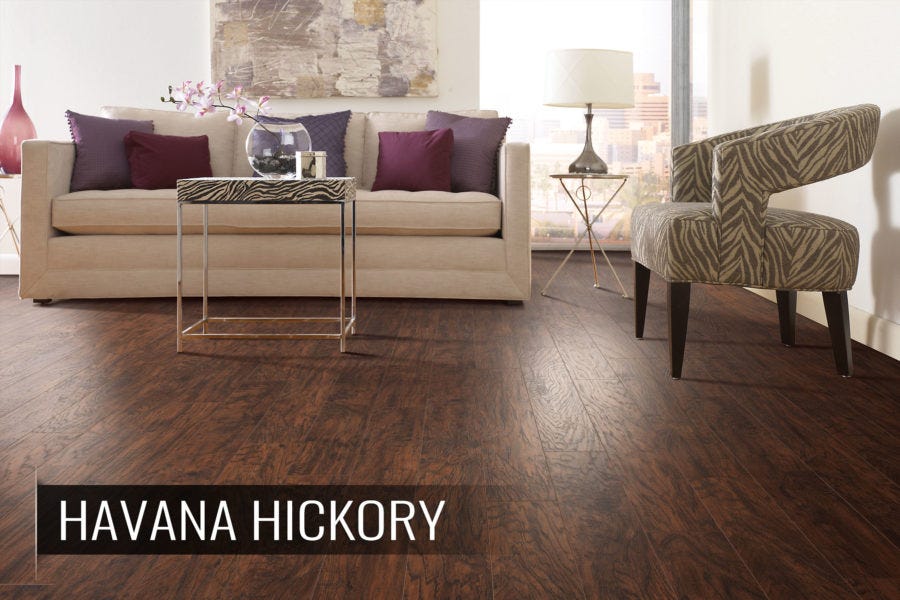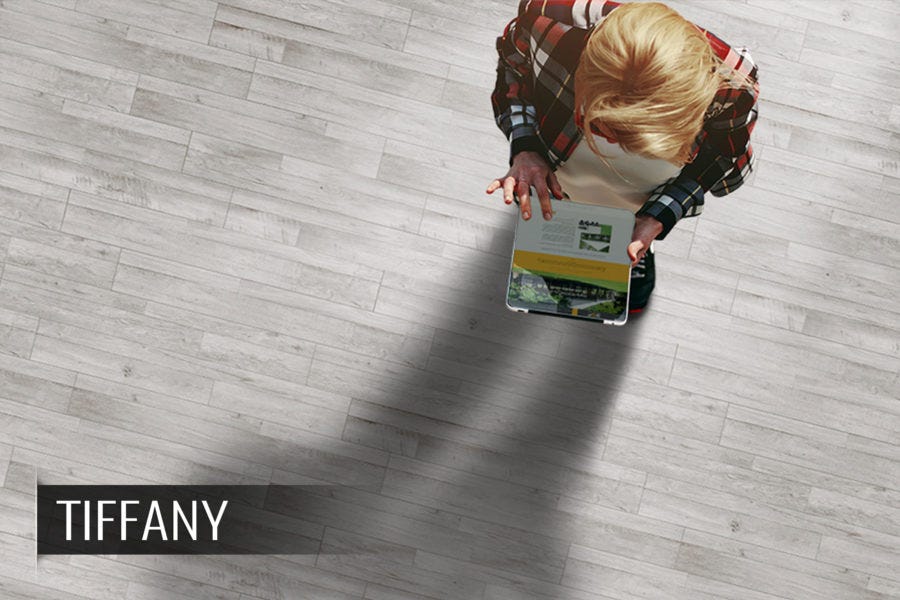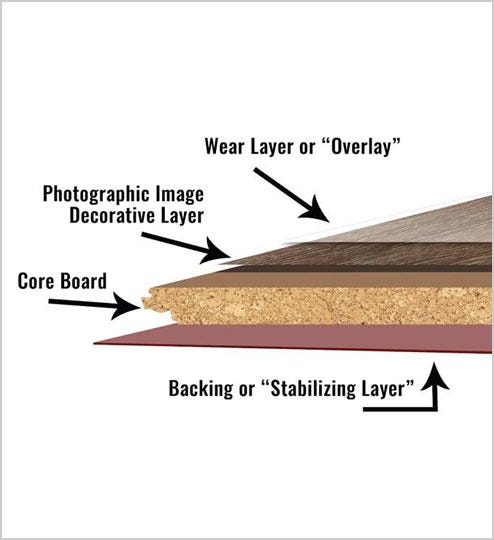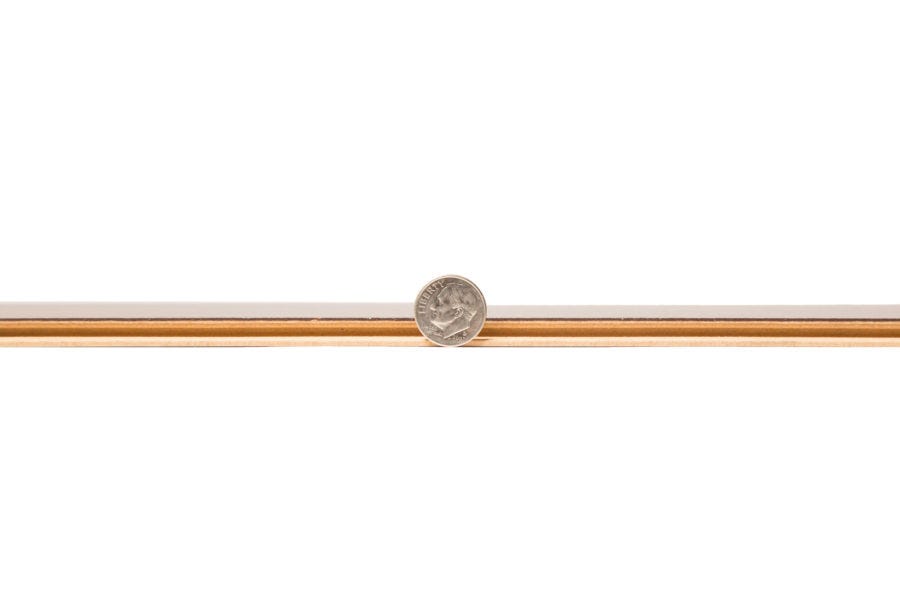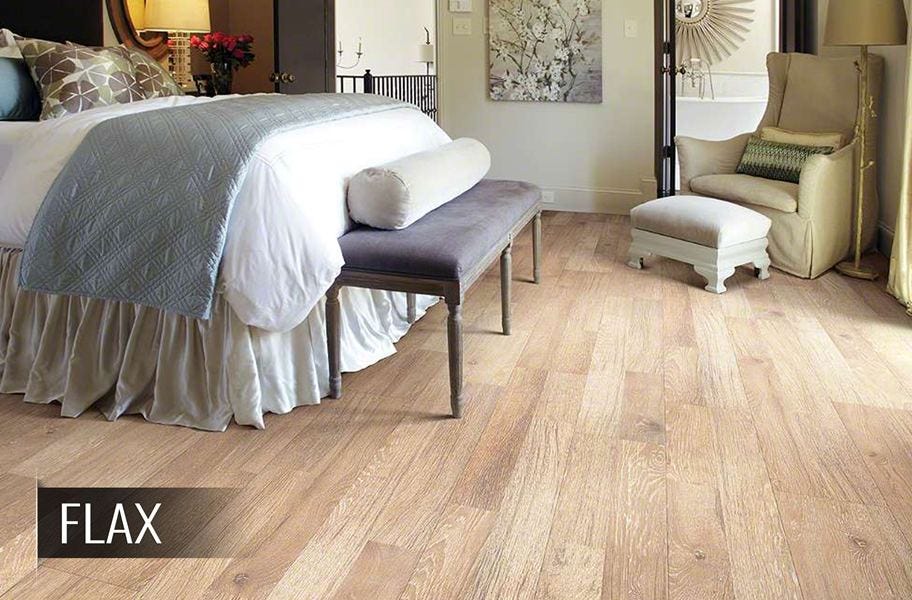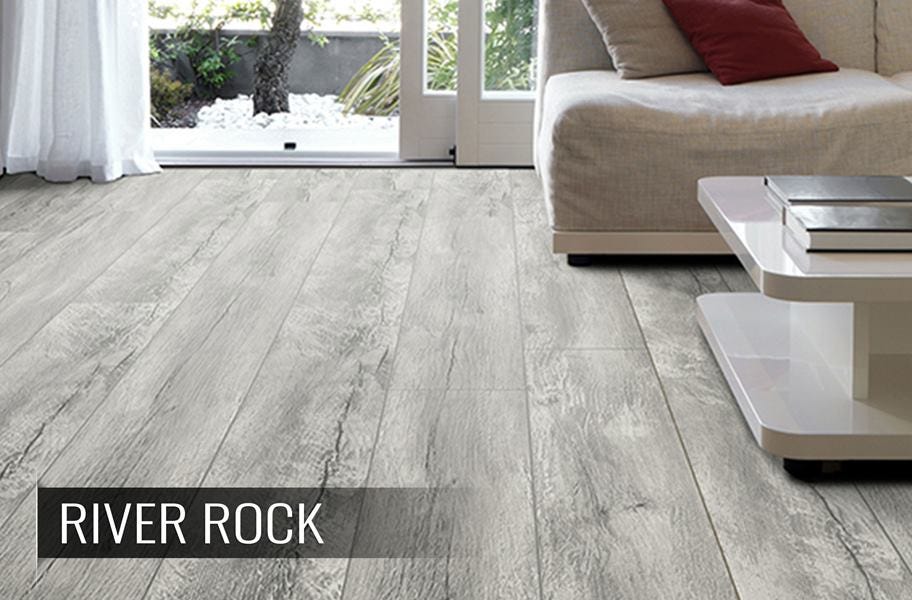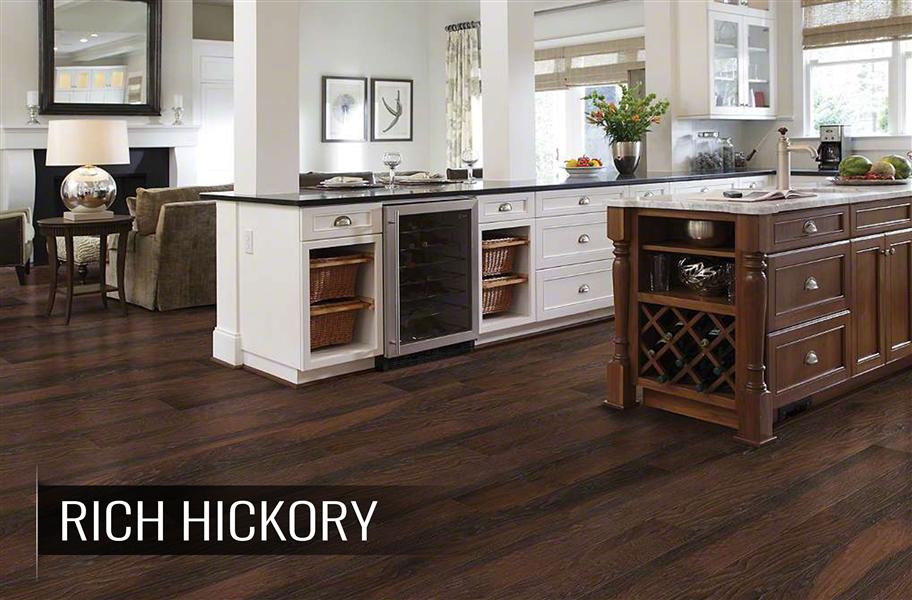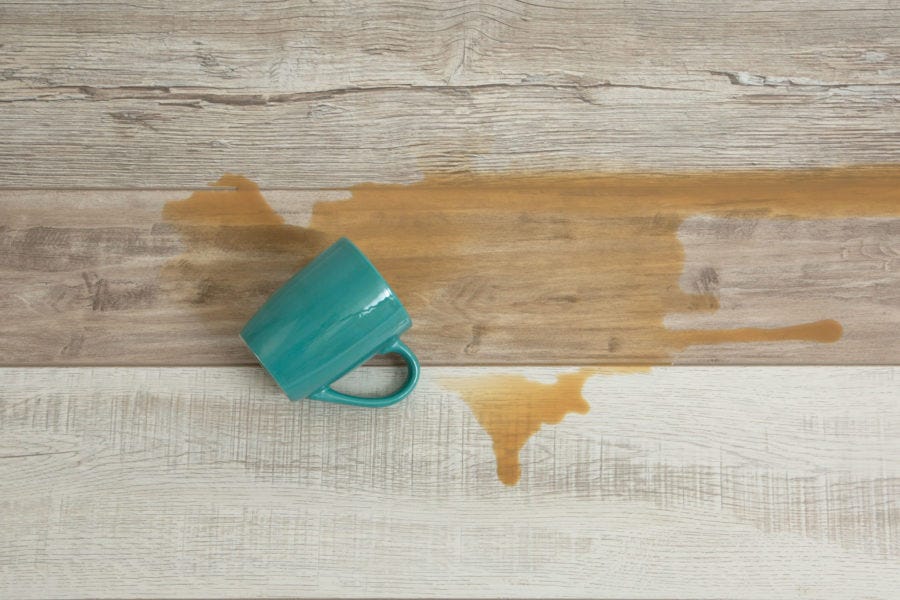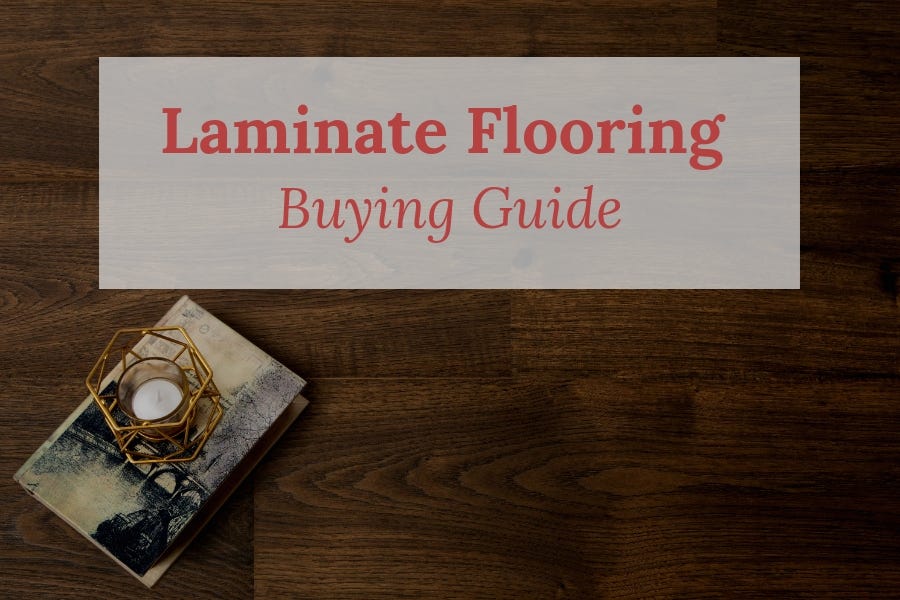
Are you looking to upgrade your home or business with laminate flooring? With so many looks and products to choose from, the buying process can be overwhelming. This guide helps simplify your decision by giving you all the details you need to find the best laminate floor for your application.
Wood-look floors are the hottest trend in flooring right now, and laminate flooring offers homeowners an affordable way to achieve their dream wood floor look. A low-maintenance and durable solution, laminate flooring continues to be the staple go-to wood flooring alternative despite the other rising trends, like vinyl or ceramic tile.
In fact, real estate experts are calling laminate flooring one of the top options for increasing home value, preceded by solid hardwood, stone and tile.
But navigating the laminate flooring market can be overwhelming. AC ratings, water resistance, styles - where do you even start in the buying process?
Don’t worry, we’re here to help make your decision easier. In this laminate flooring buying guide, we’ll lay out the pros and cons of laminate flooring as well as its uses, construction, looks, installation and more. Keep reading to learn how to choose the best laminate flooring product for your home or business.
| Related Content >> Laminate Flooring Trends |
What is Laminate Flooring?
https://youtu.be/qQIxn__RVhk
How do you get that gorgeous wood look without paying a pretty penny for solid hardwood?
Easy - laminate flooring.
A low-cost alternative to standard wood or stone, laminate is a durable floor that comes in many attractive styles. Laminate is a popular flooring option in rental homes and condos but is also ideal for families and businesses. The realistic wood and stone looks along with the low-maintenance cleaning routine make laminate a flooring favorite.
This type of synthetic floor first made a splash on the flooring market in the 1970’s as the first man-made alternative to natural wood. Laminate quickly gained popularity as manufacturers created increasingly realistic looks that could easily pass for real hardwood.
Laminate was kind of the pioneer for realistic wood-look flooring, and other types of flooring have caught on and have begun releasing their own realistic wood looks. But laminate holds strong as the go-to wood-look floor for several reasons.
Why Use Laminate Flooring?
What keeps this traditional floor trending as a popular option in modern homes and businesses? Here’s why homeowners continue to choose laminate flooring:
Pros of Laminate Flooring
-
- Durable: Laminate flooring’s supreme durability makes it a good option for high-traffic areas or homes with kids and pets.
- More scratch resistant than vinyl: Laminate has a strong wear layer that protects the floor from scratches, dents, wear and staining, all the things pets love to test our floors on.
- Realistic wood looks: Laminate floor planks often have some surface detail to further mimic a natural hardwood look and can have the look and feel of a hand-scraped hardwood, embossed wood, distressed hardwood or come in textured or smooth. Unlike real hardwood, you’ll see consistent quality across all laminate flooring boards.
- Can resist some water: Advances in construction are improving laminate’s water-resistant capabilities. While it’s still not as waterproof as vinyl flooring, most new laminate floors can withstand topical moisture. Proper installation helps keep water from seeping through the planks.
- Can be installed over radiant heating systems: You won’t find this feature with most hardwood flooring options.
- Easy to clean and maintain: Simply mop or sweep up messes as needed. No floor waxing is ever necessary.
-
- Easy to install: Laminate flooring is designed to be installed as a floating floor, meaning that it is not secured to the ground underneath, but rather “floats” by the means of an interlocking design. This process is easy and typically done by our customers of all DIY levels. (See our laminate flooring installation video below!)
- Easy to stand on for longer periods of time: Most laminate installations include underlayment, which can make the floor feel more comfortable under foot.
- Cost effective: Laminate floors are an affordable alternative to hardwood floors. Lower price and lower maintenance? Yes, please!
Cons of Laminate Flooring
As much as we'd love to toot laminate's horn all day, this floor (like all floors!) has its bad days. With any type of flooring, there are always some concerns to be aware of. Here are the less appealing factors of laminate flooring:
- Not as water-resistant as vinyl flooring: While laminate flooring has come a long way in its water-resistant capabilities, it still cannot tolerate standing pools of water. Unlike vinyl, laminate’s water resistance works from top to bottom rather than bottom to top. If you have moisture issues with your subfloor, you’ll still need a vapor barrier.
- Not recommended for full bathrooms or basements: Since these areas are prone to leaks and flooding, you’ll want a more water-resistant floor. You can make your laminate floor more water resistant by installing an underlayment and vapor barrier as well as using the glue-down installation method.
- Sound: If installed poorly, laminate floors can create a hollow, empty sound. Every product comes with thorough installation instructions, and if you’re really worried, you can always hire an expert. Plus, a good underlayment can make for a quieter laminate floor.
| Related Content >> Laminate vs. Vinyl Flooring |
Where to Use Laminate Flooring
Laminate flooring is a popular, versatile option found in homes, apartments, businesses and offices. Because laminate is such a durable floor, it works well in high-traffic areas as well as homes with kids or animals.
The differentiating factor between residential laminate flooring and commercial laminate flooring is the product's AC rating, which stands for Abrasion Class. This number reflects the product's ability to withstand traffic, wear and tear.
Products with higher AC ratings, like 4 or 5, are typically used for commercial purposes, while products with AC ratings from 1 to 3 are best for homes. The higher the AC rating, the better the floor is for handling heavy traffic.
Here are some considerations for residential and commercial use.
Residential Laminate Flooring
Laminate flooring can technically be installed in any room of the home, but most manufacturers recommend avoiding water-prone areas, like bathrooms, laundry rooms or basements. If you spill water and don’t clean it up right away, your laminate can warp and bubble.
Enter: waterproof laminate flooring! This up-and-comer is exactly how it sounds: DIY-friendly laminate flooring that is 100% waterproof. This means you can install it in kitchens, bathrooms, basements, you name it.
Even better – waterproof laminate floors mimic all the current look and style trends of solid hardwood and traditional laminate, giving you everything you could ever ask for in one sharp floor.
Since floors for residential use are supporting lighter traffic than, say, a grocery store, products with an AC rating between 1 and 3 will work well for the home. If you have perts (or especially active humans) in the house, you will likely want to get a floor with an AC 3 rating or higher.
As for residential style, laminate’s gorgeous wood and stone looks and variety of patterns and textures invite you to make a statement in your living room or dining room. Homeowners and designers are using eye-catching layouts to elevate homes into contemporary show-stoppers. Additionally, the handscraped finish is trending in homes right now due to the classic, rustic effect that makes your floor look really expensive.
SHOP RESIDENTIAL LAMINATE FLOORING
Commercial Laminate Flooring
Laminate works well in the commercial sector because it’s super durable and quite affordable - two appealing qualities to most business owners.
The main concern for business owners purchasing laminate flooring for commercial use is to understand the product’s AC rating. The higher the AC rating, the better able the material is to handle high-traffic commercial environments. Commercial environments with heavy foot traffic will want to consider a laminate floor with a 4 or 5 AC rating.
Because laminate is so durable - being spill and stain resistant - it’s an ideal floor for busy commercial areas like department stores and shopping centers. Maintenance is easy and spills can be easily cleaned up without ruining your floor. You simply need to protect the wear layer by sweeping or vacuuming frequently.
Additionally, laminate flooring can be installed in open public areas without the need to worry about your floor yellowing under the UV lighting. Unlike vinyl flooring, laminate can be exposed to sunlight without fading.
SHOP COMMERCIAL LAMINATE FLOORING
Laminate Flooring Construction
Laminate is progressing more and more with technological advancements in construction. But how is it that manufacturers are making laminate more attractive, durable and safer for families? Let's start by understanding how laminate flooring is made.
Like a sandwich, laminates are made up of layers (although they are not as tasty):
- Backing: This is the backbone of your laminate plank, helping provide stability for the floor and helping to keep water from penetrating the flooring from underneath. This would be your bottom piece of bread in our flooring sandwich.
- Core layer: On top of the backing layer, a core layer gives the floor its durability and stability. This layer is typically made of compressed high density fiber board (aka HDF) and is resistant to water, but not necessarily waterproof. This is essentially the hearty “meat section” of the floor.
- Image layer: This holds the pattern or print, making the laminate look like wood (or, now, stone, metal and more!). The image layer can include rougher, more natural looking scrapes and knots just like the real deal. It’s literally a photo (a really sweet, high-res photo) of the material being printed on your floor and, it is shockingly convincing. Think of the image layer as perhaps where the mustard or condiments would go, to dress up your sandwich and give it some more flavor.
- Wear layer: The wear layer is what protects the floor from scratches, dents and staining and provides the realistic look and feel of the floor. It’s the reason that 10 years from now, after the wear and tear of everyday life, your laminate will still look great. Imagine it as the protective shield to your floor or, in our sandwich, the top piece of bread.
Improvements to each of these layers is what gives us the strong, durable and beautiful laminate flooring we have today.
Laminate Flooring Thickness
Laminate flooring products come in different thicknesses, ranging from 6mm to 13.5mm, but this is not always a tell-tale sign that is relative to the floor’s durability. There are some thinner laminate products in which the durability may surpass that of a thicker plank and vice versa.
Typically, the thicker the laminate floor, the more likely you will have a natural wood sound underfoot. For durability, be sure stick with products that have higher ratings and better construction.
AC Rating
The AC rating, which stands for Abrasion Class, is the number you want to pay attention to. A product’s AC rating reflects how appropriate it is for a certain level of traffic, and this is what will help you find the best flooring for your application.
Laminate flooring goes through a series of tests to determine the durability and appropriate installation areas for the flooring. Once testing is complete, the product is given an AC rating. There are a total of five AC ratings for laminate:
- AC1: For low foot traffic residential spaces (closets and bedrooms)
- AC2: For medium foot traffic residential spaces (dining rooms, living rooms, and family rooms)
- AC3: For all foot traffic residential spaces (kitchens, hallways, and living rooms)
- AC4: For all residential locations and some medium traffic in commercial areas
- AC5: For heavy foot traffic in commercial spaces
When purchasing laminate flooring for residential or commercial use, be sure to understand how the product is rated for use.
Laminate Flooring Health & Safety
Before you go filling your home with something as big as an entire floor, you want to be assured your family won’t be breathing in toxins for years to come. Flooring of all types has been questioned on its health effects, and here’s what you need to know about laminate specifically.
Laminate flooring underwent some scrutiny in recent years after a “60 Minutes” report showed that a line of products had been found to emit formaldehyde at levels several times higher than California regulations allow (California seems to be the only state with real regulations on this). Formaldehyde occurs naturally in the world and has been commonly used in home products for decades. It’s not necessarily safe or dangerous, but rather complicated. In general, though, you want to reduce exposure to formaldehyde whenever possible to protect your health.
Because of this, it’s important to research the brand you’re considering to make sure they comply with the formaldehyde emissions standard. The standard that is presently in effect by the California Air Resources Board - known as CARB2 - requires that laminate and other composite wood materials emit no more than 0.05 to 0.13 parts per million of formaldehyde.
The good news? Big manufacturers now do several different tests and certifications on their products to assure they’re safe for your family. Most of our laminate flooring products are completely free of formaldehyde and comply with CARB2. With our flooring, y’all can breathe easy knowing your family is safe of health hazards... from your floor at least.
Laminate Flooring Looks
While a functional floor may be the top priority, style has the power to transform the look and feel of your room. Here’s what’s trending in laminate flooring in terms of looks, textures and colors.
Wood-Look Laminate Floors
The wood grain look is what laminate flooring has been known for. Laminate floors replicate the look of wood while being easier to install, clean and maintain compared to the real deal. As technology has improved, so have the print possibilities and the range of beautiful floors that are available.
Laminate flooring planks often have some surface detail to further mimic a natural hardwood look. Planks can have the look and feel of a hand-scraped hardwood, embossed wood or distressed hardwood, and they even come in textured or smooth.
What you choose is just matter of opinion, as the surface detail does not change the durability or longevity of the floor - it simply helps to continue fooling your friends to believe it’s real hardwood flooring.
- Reclaimed Wood-Look Laminate: This simply means manufacturing laminate planks to resemble reclaimed wood since it is so popular right now. Reclaimed wood (usually) comes naturally distressed, mimicking the wood look with randomized scrapes, burns, knots, etc.
- Weathered & Distressed Wood-Look Laminate: Weathered looks often feature a more subtle wire brushed look, while distressed looks go all the way with the appearance of knots, burns, scrapes - the works. You can now get the same weathered and distressed looks available in traditional solid hardwood in easy-to-maintain, affordable laminate.
- Rustic & Hand-Scraped Wood-Look Laminate: Long, ingrained scrapes show in the finish, leaving the floor looking finished, classic and rare. This is often very expensive in solid hardwood, but notably less costly in lookalike laminate.
SHOP WOOD-LOOK LAMINATE FLOORING
Laminate Flooring Colors
The extreme lights and darks have been trendy for the past few years with beachy whitewashed looks and almost black espresso looks. But warmer and more middle-of-the-road looks are starting to come into the laminate flooring colorful picture.
Of course, gray laminate floors are a residential and commercial favorite and will continue to top the trends charts for the next decade or some. But here are the trendiest laminate flooring colors across modern homes:
Gray Laminate
Gray wood-look flooring has grown exponentially over the last decade. In addition to looking chic and trendy, gray laminate floors set the tone of a cool, contemporary home. They give you a neutral backdrop for decorating in virtually any color. Aquas, greens, bright bold colors or even black and white – they will all go with your sleek gray flooring.
Espresso Laminate
Chic, modern, sleek espresso laminate floors are what you want if you’re looking to make a statement. These rich, deep colors look as gorgeous in laminated wood flooring as solid hardwood.
While these dark floors are beautiful, they can tend to make your room look small and show dirt/dust more easily. While light colors brighten your room and immediately make your space look bigger, dark colors tend to do the opposite.
Additionally, dark floors are notorious for showing every scratch, speckle of dirt or imperfection. Something to think about!
SHOP ESPRESSO LAMINATE FLOORING
How to Install Laminate Flooring
One of the biggest perks to buying laminate flooring is you can totally install it yourself if you’re the DIY-type. Most laminate is installed as a “floating floor” which means you don’t need any glue, tape, etc. – you just lay it right on top of your existing floor, making it super DIY friendly.
Check out our video below for our DIY laminate flooring installation steps:
If you’re installing laminate flooring for commercial use in a high-traffic area, we recommend using glue to secure the planks. Glue creates a seal between the planks, which also makes it a good choice for moisture-prone areas. However, this type of installation can be trickier as a DIY project, so you may want to hire an installer.
When choosing laminate flooring, check if your product comes with an attached underlayment. If not, you will need to get one to install under your floor. Underlayment provides more stability for your flooring, minimizes the hollow sound from foot traffic, and helps increase the longevity of your floor.
In addition to an underlayment, it’s important to install a vapor barrier if using laminate flooring in basements, kitchens and bathrooms. These help protect your new floor from moisture.
| Related Content >> Underlayment Buying Guide |
How to Clean Laminate Flooring
Laminate flooring is easy to clean and maintain. With laminate, the most important thing is to clean up spills as quickly as possible to prevent moisture from seeping through and damaging your floor. Additionally, you don’t want to use liquid cleaning material to clean laminate flooring since it doesn’t handle moisture so well.
Here are the important things you need to know about cleaning laminate flooring:
- Clean up spills ASAP! (I know, I said it already, but this is kind of a big deal.)
- Regularly sweep up any dust, dirt or debris or use a vacuum with the hard floor attachment.
- Use a damp cloth to blot up spills.
- Periodically clean the floor with cleaning products made specifically for laminate floor care.
- Avoid washing or wet mopping the floor with soap, water, oil-soap detergent, or any other liquid cleaning material. This could cause swelling, warping, delamination, and joint-line seperation, possibly even voiding the warranty.
- Avoid using steel wool, abrasive cleaners or strong ammoniated or chlorinated type cleaners.
Laminate Flooring FAQs
From pricing and cleaning to protecting your laminate floor, here are our answers to our most frequently asked laminate flooring questions.
How much does laminate flooring cost?
Laminate flooring cost varies by manufacturer, ranging from about $1.46 - $4.86 per square foot. Water-resistant and waterproof laminate planks will be on the higher end. Pricing also depends on whether the product has underlay attached, registered embossing or higher quality images.
With that being said, I’ve pulled the basics of laminate flooring prices. I’m estimating the laminate flooring cost based on 1,000 square feet.
| Laminate Type | Average Cost by SqFt | Low | Average | High |
| Laminate | $2.40 | $1,150 | $2,400 | $3,270 |
| Water Resistant Laminate | $3.99 | $3,580 | $3,990 | $4,400 |
| Waterproof Laminate | $4.38 | $3,900 | $4,380 | $4,860 |
How do you clean laminate flooring?
To clean your laminate floors, simply sweep or vacuum up any dust, dirt or debris. Use a damp cloth to blot up spills and avoid wet-mopping or using liquid cleaning materials on your laminate floor. Be sure to clean up any spills immediately to prevent damage to your flooring.
Is laminate flooring water resistant?
More water-resistant and waterproof laminate flooring products have become available recently, but it’s important to understand that waterproof laminate is different from waterproof vinyl. Unlike vinyl, laminate is waterproof from top to bottom. This means that it can withstand water on the surface but may swell if water gets through the planks.
Is laminate flooring safe?
As far as safety goes, most homeowners are referring to formaldehyde typically found in wood and synthetic wood products. The truth is, some laminate products do contain the chemical, but all of ours meet the CARB2 standards. Most of our laminate products are even completely free of formaldehyde.
In you want to ensure your laminate floor is compliant with these regulations, look under the product highlights to ensure that it is CARB2-compliant.
| Related Content >> How to Install Laminate Flooring on Walls |
Laminate Flooring Reviews
Want to find the best laminate flooring? Here is what our customers are loving:
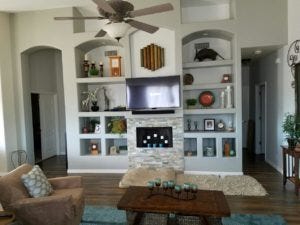
"We love this flooring!" - Irene | Phoenix, AZ
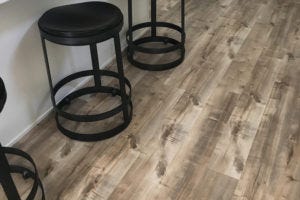
"Love our new floors throughout the downstairs!" - Trisha C. | Placentia, CA
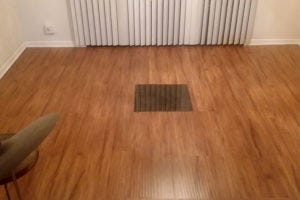
"The floor is beautiful and very durable. Easy to put together." Samuel R. | Phoenix, AZ
Which Laminate Floor Will You Choose?
Your dream wood-look floor is achievable with inexpensive, low-maintenance laminate flooring. With its stain- and scratch-resistant qualities, laminate is an ideal choice for high-traffic spaces and residential homes with pets and kidts. Rest assured knowing you’re investing in a long-lasting floor that will retain its beauty for years to come.
To recap, the most important things to consider when buying laminate flooring is whether you need a water-resistant or waterproof floor, the AC rating and your style preferences. Your decision will depend largely on where you’d like to install laminate flooring and your design tastes.
Want to see your new floor in your home before you buy? Order free samples of any of our laminate flooring products today! Get familiar with the look and feel of your floor to ensure you’re making the best decision.
Ready to get started?
ORDER FREE SAMPLES SHOP ALL LAMINATE FLOORING
